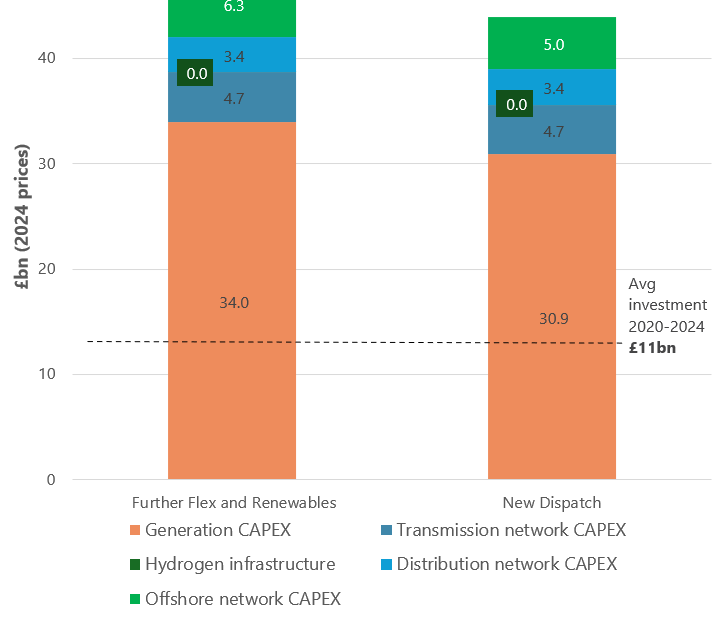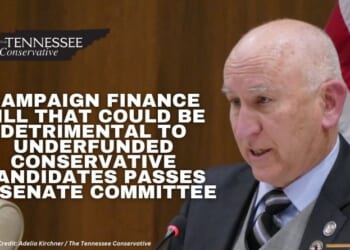LAST November the National Energy System Operator (NESO) published a report, ‘Clean Power 2030’, which examined how Labour’s plan to decarbonise the power sector by 2030 could be achieved.
Although Energy Secretary Ed Miliband crowed that the report proved his plan was feasible, the opposite was the case: as NESO stressed, we would still need a full fleet of gas power stations to fire up when the wind stops blowing, so it would be impossible to run the country only on ‘clean’ power. Miliband has also repeatedly and falsely claimed that NESO said electricity bills would fall.
But buried in the small print of the report is the ugly truth about just how much Miliband’s plan would cost us all, something the mainstream media seem to have missed at the time.
Over five years, the capital cost of building all the wind and solar farms needed plus upgrading the power grid will add up to an astonishing £242billion. Sums like these are mind-boggling, but it works out at about £9,000 for every household in the country.
Most of this money will come from private-sector investors, who will not only want repaying in full, but will also demand large profits on their investment. The cost will, of course, be picked up by energy billpayers.

https://www.neso.energy/document/346781/download
And what do we get back from this mammoth investment? It will replace about 70 TWh of gas power generation with wind and solar power, about a quarter of the total electricity generated. As we will still need to maintain a full working fleet of gas power stations, the only financial saving will be the fuel that would have been used in those gas plants. The cost of that fuel works out at £3billion a year. However the new wind and solar farms will need money spending on operating and maintenance, so the net saving would be in reality less than £2billion.
In other words, we are planning to spend £242billion to save £2billion a year! This really is the economics of the madhouse. Yet there is still no real recognition of this fact in the media or amongst our politicians, who continue to recite from the Net Zero mantra.
The Reform Party have at least pledged to put a windfall tax on renewable energy, hoping to recoup some of the tens of billions of already subsidies handed out. (Reform have been wrongly criticised for not simply planning to abolish those subsidies – unfortunately they are legally binding, long-term contracts which cannot be cancelled). But come the next general election in five years’ time, we will have already spent or committed most of that £242billion, so it will be too late for anybody to do anything about it.
How on earth did we get ourselves into a situation where one man, Ed Miliband, can single handedly do so much damage?
Solar farm madness
Burcot is a Thames-side hamlet in touristy Midsomer Murders land. It sits in the middle of the Green Belt, a few miles from the historic Wittenham Clumps, one of South Oxfordshire’s most iconic landmarks and an SSSI.
None of this seems to matter to the vandals who want to build a solar farm just a mile away. The planning application has twice been turned down by the district council on the grounds of ‘harm to the Green Belt’ but ‘Mad Ed’ Miliband has allowed yet another appeal in his desperation to cover the countryside with these industrial sites.
The solar farm will have a capacity of 44 MW, with a battery storage unit rated at 50 MW, and will be built on prime farmland. Planning permission has already been given for a 300-acre solar farm in nearby Nuneham Courtenay, and there is another application for a 140-acre one next door to that, equating to a loss of nearly 500 acres of Green Belt land within an area of approximately six square miles.
Quite apart from the visual impact on the countryside, the battery farm poses an environmental risk. Within the last month there have been two major fires at battery storage facilities in California and Australia – see here and here. These lithium fires can take days to put out and pump vast amounts of hydrogen fluoride gas into the atmosphere. It is crazy that such potentially toxic industrial sites are allowed anywhere near human habitation.
Miliband wants to plaster the countryside with a thousand solar farms like Burcot, at an estimated cost of £26billion over the next five years, tripling the current capacity.
And all of this for what? It is claimed that the Burcot solar farm would power 16,842 homes, except that they would only get that electricity during daytime, and in winter they would only be enough to last half an hour or so.
One day last week when we had a spell of gloomy weather, all the solar farms in Britain produced only enough electricity to power the country for five minutes, meaning of course that we had to fall back on gas generation. Because of short days and bad weather, solar power is virtually worthless during winter months.
According to the blurb produced by the developers, Burcot will save 10,371 tonnes of CO2 a year. Given that the world produces 35billion tonnes, I don’t think Burcot will exactly save the planet.
Solar power is so intermittent that it is only viable with subsidies, which added about £600million to your energy bills last year. And we won’t even go into their carbon footprint and environmental damage caused in China where the panels are made.
Instead of tripling solar power, as Miliband plans, we could simply build three or four gas power plants instead, and have reliable power when we need it, instead of industrialising the countryside and wasting valuable farmland.










